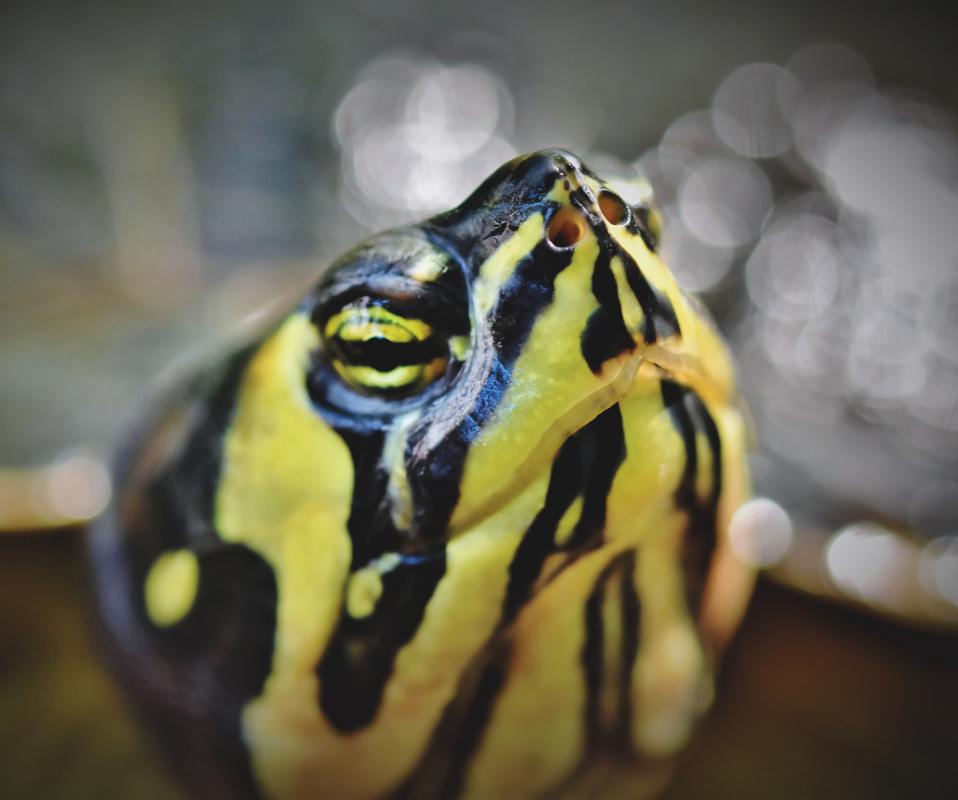At AllThingsNature, we're committed to delivering accurate, trustworthy information. Our expert-authored content is rigorously fact-checked and sourced from credible authorities. Discover how we uphold the highest standards in providing you with reliable knowledge.
How Big Do Turtles Get?
As far as pets go, turtles might never achieve the popularity of cats and dogs, but the little reptiles still have a lot of fans: In the United States alone, approximately 2 million turtles are kept as companions. They are quiet, easy to care for, inexpensive, and can live for several decades if given proper care.
But like many other creatures, turtles have shrunk over time, and those that lived millions of years ago might have been better as protectors than pets. The most eye-opening example of just how big those prehistoric reptiles got comes from a turtle shell discovered in Venezuela in early 2020.

The 8-million-year-old shell, considered the largest intact shell ever discovered, measures 8 feet (2.4 m) long. Scientists estimate that it belonged to a turtle weighing approximately 2,500 lbs (1,145 kg). The fossil comes from a turtle known as Stupendemys geographicus, which existed in South America during the Miocene epoch. For comparison, the largest turtle in existence today, the marine leatherback, is roughly half the size of its ancient ancestor.
Besides the shell, researchers found evidence that the males of the species probably had horn-like growths on their shells that they probably used to fight other males. Perhaps even more terrifying was the discovery of a caiman's tooth in the turtle's shell, suggesting that its size and horns weren't enough to scare away predators.
Coming out of their shells:
- Turtles have existed on Earth for more than 200 million years -- longer than snakes, crocodiles, alligators and most other reptiles.
- A turtle's shell is created from more than 50 bones and includes its spine and rib cage.
- The oldest turtle on record was 188 years old; it was named Tu"i Malila and lived in Tonga in the South Pacific.
Frequently Asked Questions
What is the size range for turtles?
Turtles come in a vast array of sizes, from the diminutive speckled padloper tortoise, which can be as small as 3 inches in length, to the colossal leatherback sea turtle, which can reach lengths of up to 7 feet. The size of a turtle is largely dependent on its species and habitat.
Which species of turtle grows the largest?
The leatherback sea turtle holds the title for the largest turtle species, with some individuals weighing over 2,000 pounds. According to the World Wildlife Fund, these marine giants can grow up to 7 feet long and are known for their deep-diving and long-distance migratory capabilities.
How do freshwater turtles compare in size to sea turtles?
Freshwater turtles are generally smaller than their sea turtle cousins. For example, the common snapping turtle can grow to about 18 inches in shell length and weigh up to 35 pounds, which is modest compared to the massive leatherback sea turtle. Freshwater turtles' sizes are adapted to their less expansive habitats.
Do turtles continue to grow throughout their lives?
Most turtles grow rapidly until they reach sexual maturity, after which their growth rate slows significantly. However, they do continue to grow at a slower pace throughout their lives. This indeterminate growth means that older turtles tend to be larger, as long as they live in environments that support their continued growth.
How can you determine the age of a turtle by its size?
Determining the age of a turtle based solely on its size can be misleading due to variations in growth rates and environmental factors. While larger turtles are often older, factors such as diet, habitat quality, and species-specific growth patterns must be considered. Age is more accurately estimated by counting growth rings on the turtle's shell, similar to tree rings.
What factors influence the growth of a turtle?
The growth of a turtle is influenced by several factors, including genetics, diet, and environmental conditions. Abundant food sources and optimal temperatures can lead to faster growth rates. Conversely, limited resources or extreme temperatures can stunt growth. Additionally, stress and illness can also negatively impact a turtle's growth and overall size.
AS FEATURED ON:
AS FEATURED ON:











Discuss this Article
Post your comments